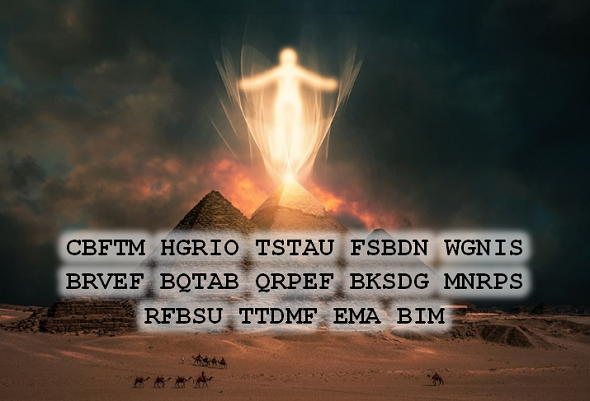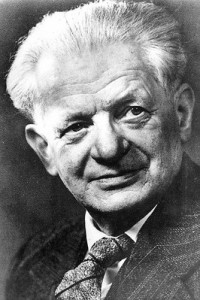In 1948, an anonymous codebreaker deciphered an encrypted message by British parapsychologist Robert Thouless. The solution is known. Can a reader find out how the successful attack worked?
Frequent readers of this blog certainly have heard of British parapsychologist Robert Thouless.
In 1948, Thouless started an interesting experiment. He took a text, encrypted it and published the result (i.e., the ciphertext), while he kept the cleartext and the key secret. His plan was to communicate the key from the beyond after his death. If somebody received the correct key from the realm of the dead, which would lead to the cryptogram being solved, this would prove that there is a life after death and that the dead can communicate with the living.
Thouless’ first try failed: the message he published was broken by an anonymous person (not in a supernatural way, but with codebreaking techniques). More details about Thouless’ experiment are available here (English blog post) and here (German Telepolis article). Thouless’ third attempt (also known as message C) is still unsolved.
Apart from the solution of Thouless’ third cipher message, there’s another question about this experiment that is still unanswered: how did the anonymous codebreaker decipher Thouless’ first message?
Thouless’ first message
Let’s look at the details. Here’s the cleartext of Thouless’ first message (it’s a Shakespeare quote):
BALM OF HURT MINDS GREAT NATURE’S SECOND COURSE CHIEF NOURISHER IN LIFE’S FEAST
The encryption method Thouless used is the Playfair cipher. The Playfair cipher substitutes letter pairs. So, we need to write the cleartext as a sequence of letter pairs:
BA LM OF HU RT MI ND SG RE AT NA TU RE SS EC ON DC OU RS EC HI EF NO UR IS HE RI NL IF ES FE AS T
The Playfair cipher requires that no letter pair consist of two equal letters. Therefore, Thouless added an X between the two Ss:
BA LM OF HU RT MI ND SG RE AT NA TU RE SX SE CO ND CO UR SE CH IE FN OU RI SH ER IN LI FE SF EA ST
If the number of letters in this cleartext were odd, another X would have to be added at the last position, but this is not necessary here. Next, Thouless chose a keyword: SURPRISE. Now, he set up a 5×5 matrix, which started with the keyword (repeating letters are omitted), followed by the remaining alphabet (I and J are considered equal in order to get an alphabet of 25 letters):
S U R P I E A B C D F G H K L M N O Q T V W X Y Z
Now, Thouless replaced the cleartext letter pairs (BA, LM, OF, HU, …) according to the three Playfair rules. Here are the rules in a diagram:
Here are the Playfair rules as a text (I refer to the letter pair to be replaced as XY):
- If X and Y are not in the same column and not in the same row (this is the most frequent case), form a rectangle and replace the two letters by the other two corner letters (the upper cleartext letter is replaced by the other upper letter in the rectangle, the lower cleartext letter by the lower one). For instance, LM becomes FT.
- If the two letters stand in the same row, each one is replaced by its right neighbor. Here, BA becomes CB.
- If the two letters stand in the same column, each one is replaced by its lower neighbor. In our example, AN becomes GW.
When applying the Playfair rules on the 5×5 matrix above, Thouless’ Shakespeare quote encrypts to:





Kommentare (10)